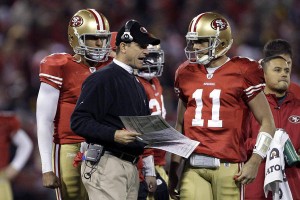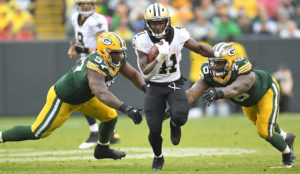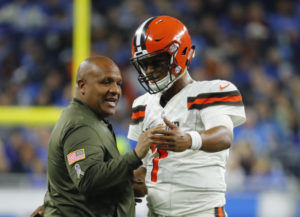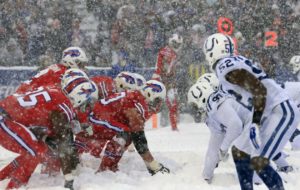Something was missing from the 2017 season: a quarterback who threw a lot of interceptions but also threw for a lot of yards. At a basic level, you might assume that these two statistics would be inversely related. After all, a bad quarterback would throw a lot of interceptions and not throw for a lot of yards, while a good quarterback shouldn’t throw many interceptions but should throw for a lot of yards.
But in a competitive environment, such absolutes rarely hold up. Some quarterbacks will have to be aggressive to be effective (high average yards per pass but also a high interception rate), while some will choose to be conservative (low average yards per pass but also a low interception rate). But in 2017, we missed that. For example:
- The three passers with the worst interception rates also ranked in the bottom six in net yards per pass attempt: DeShone Kizer, Trevor Siemian, and Brett Hundley were just bad, not aggressive.
- Marcus Mariota ranked had the 4th worst (i.e., highest) interception rate and ranked 14th in net yards per attempt. By 2017 standards, that stands out as aggressive.
- The quarterbacks who 5th-through-8th in interception rate all ranked below-average in net yards per attempt. Again, these quarterbacks were not necessarily very aggressive, just not very good.
- Ben Roethlisberger (12th worst interception rate, 7th best net yards per attempt average), Derek Carr (10th, 15th), Blake Bortles (14th, 12th), and Jameis Winston (13th, 8th) join Mariota as the only passers to rank in the bottom 15 in interception rate and top 15 in net yards per attempt.
Conversely, Tom Brady, Jared Goff, Drew Brees, and Alex Smith all had very low interception rates and very high net yards per attempt averages, with all four ranking in the top 7 of both metrics. Philip Rivers ranked 2nd in NY/A and 9th in interception rate. Case Keenum ranked 4th in interception rate and 10th in NY/A.
Really, the only two outliers when it came to great interception rates were Tyrod Taylor (1st in interception rate, 25th in NY/A) and Jacoby Brissett (tied for 6th in interception rate, 28th in NY/A).
The chart below shows the 32 qualifying passers in 2017. The Y-Axis displays net yards per attempt; the X-Axis displays interception rate. You’ll notice a lack of any dots in the upper right section of the graph, which is where the very aggressive passers would go:







